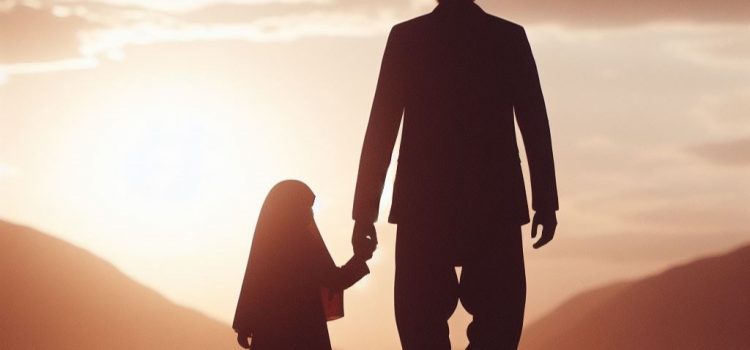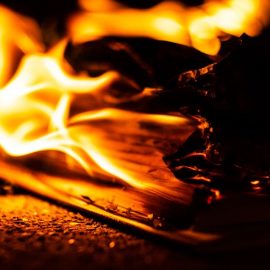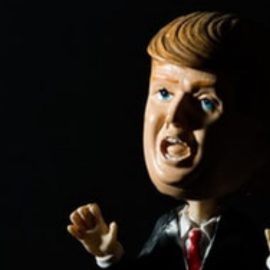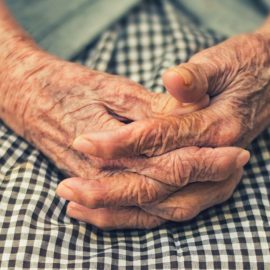
What role has Malala’s father played in her life? How did he feel about having a daughter?
In her memoir, Malala Yousafzai recounts how her father and she came of age against the backdrop of the Taliban’s rise to power. She discusses how her father was willing to defy tradition and fundamentalist religious views to raise her in an environment of compassion, gender equality, and secular education.
Continue reading to learn about Malala’s father, Ziauddin Yousafzai.
Malala’s Father, Ziauddin Yousafzai
When Malala was young, her family was very poor. They lived in a two-room shack opposite the school that Malala’s father, Ziauddin Yousafzai, had cofounded. They had no bathroom or kitchen. Malala’s mother, Toor Pekai, cooked over a fire on the ground. Later, they moved to a one-story concrete house.
Pashtuns’ most important values are honor and hospitality. Malala’s family also valued generosity and compassion toward the less fortunate. For example, Ziauddin let poor children enroll in his school free of charge. When the school eventually grew to 800 students, 100 of them were attending tuition-free. Malala’s mother let some of these children live with the family, and she fed breakfast to other students because she said it was hard for them to learn when they were hungry.
Like her parents, Malala was motivated by compassion for the poor. There was a huge trash heap down the street from her house because there was no garbage collection in Swat. When she saw some children there, collecting recyclable waste to sell, Malala begged her father to give the children free places at his school. He explained that they were probably the breadwinners for their families, so if they went to school, their families would go hungry. Instead, he started a local campaign arguing for the education of these poor children.
Malala learned an early lesson about compassion versus revenge from her parents. She had a toy cell phone that disappeared one day, and Malala thought her friend had stolen it. In retaliation, Malala began stealing her friend’s toys. When Malala’s mother found out, Malala initially lied and said she hadn’t done it, but then she confessed. She cried and apologized to her mother, who then took Malala to apologize to her friend. Malala never lied or stole again.
Afterward, her father consoled her by telling her stories of great leaders who had made mistakes. Malala learned that everyone makes mistakes; what matters is what you learn from them. This influenced her belief that the Pashtun emphasis on revenge was wrong. Instead of hurting someone who hurt you, as was the Pashtun practice, Malala believed you should teach them to do better.
Malala’s family were traditional Pashtun Muslims in many ways, but, when it came to gender roles, they frequently defied tradition. Pashtun marriages are usually arranged, but Malala’s parents married for love. Malala says that many Pashtun men physically abuse their wives, but Ziauddin cherished Toor Pekai and would never do such a thing. Ziauddin also talked his problems over with Toor Pekai and listened to her advice, even though in Pashtun society it’s seen as weak for men to share problems with women.
For Pashtuns, the birth of a girl is considered a disappointment, as they believe that women’s sole function is to prepare food and give birth. But, when Malala was born, her father believed there was something unique about her. He asked people to throw dried fruits, sweets, and coins into her cradle, even though that was a Pashtun custom reserved for boys.
Malala’s family often went to stay with her father’s family in the mountain village where he grew up. There, women couldn’t leave the house without covering their faces, and they weren’t allowed to speak with men unless they were close relatives. Malala did not cover her face in the village, even when she became a teenager. The people in the village criticized her, but her father defended her.
The Value of Education in Malala’s Family
Malala’s family had a long tradition of valuing secular education. Her grandfather taught theology in a government high school and was an imam at the local mosque. He sent Ziauddin to the government school, rather than the religious madrasa, even though people criticized him for this because he was a religious leader himself. Malala’s grandfather was also an avid reader and cared about the rights of the poor and disadvantaged, values he passed on to his son.
Malala’s father dreamed of starting his own school, but his family was poor and had no connections. He nonetheless managed to attend a good university and, although he encountered many setbacks, he eventually founded a school. Over time, the school grew and expanded to three locations. Ziauddin became known in the community for his willingness to speak up and criticize the government and the army.
Malala grew up in her father’s school, sitting in on classes and admiring the teachers. When she started attending school herself, she loved it. She had an ongoing rivalry with her best friend over who would get the top marks in their class, and Malala almost always won.
Pakistani Dictators and the Creation of the Taliban
In 1977, when Malala’s father was eight, there was a military coup in Pakistan and a general named Muhammad Zia ul-Haq seized control from the elected prime minister. General Zia tried to win the support of the Pakistani people by campaigning to make Pakistan a strict Muslim country and arguing that it was the people’s religious duty to obey his government. Many madrasas were opened during his rule, and Islamic studies became a required class in secular schools. Zia also enacted many laws curtailing women’s rights.
Then, the Soviet Union invaded Pakistan’s neighbor, Afghanistan, in 1979. Millions of Afghans fled to Pakistan; General Zia accepted them as refugees and began a program to train them as mujahideen, or resistance fighters. These mujahideen eventually became the Taliban.
Conditions That Contributed to Radicalization: The Example of Malala’s Father
Although Malala’s father eventually became an outspoken critic of the Taliban and a founder of secular schools, his experience as a teenager demonstrates how young men in Pakistan could become susceptible to radicalization.
Malala recounts how Ziauddin grew up in a poor village with few opportunities. Although he attended a secular school, he also studied the Quran with a religious scholar when he was a teenager. His teacher constantly talked about jihad, saying it was the right choice because life on earth was short, and there were few work opportunities in the village. Ziauddin was influenced by his teacher and was afraid of working in the dangerous coal mines like many of the men in his village, so he decided he wanted to become a jihadi. Ziauddin later told Malala that he believed he was subjected to a type of brainwashing.
Some of the boys from Ziauddin’s district were recruited to wage holy war against the Soviets alongside the Taliban in Afghanistan. Years later, the same organization that recruited them became the Swat Taliban.
One of the things that changed Ziauddin’s mind about becoming a jihadi was spending time with his future wife’s family. They belonged to secular nationalist parties and were opposed to Pakistan’s involvement in the Afghan war.
| Why Do People Join Terrorist Organizations? While research about why people join terrorist organizations is inconclusive, experts suggest that Ziauddin’s reasons for wanting to join the Taliban are typical. Contrary to the popular belief that terrorism is the product of mental illness or psychopathy, experts believe that people who join terrorist groups are frequently motivated by social conditions, such as poverty, lack of education, or lack of political power. Becoming a terrorist or jihadi not only provides these individuals with a sense of belonging, it also provides opportunities for power and advancement to those who otherwise have few work opportunities. Scholars generally agree that terrorism is best understood as a question of political and group dynamics, rather than as a matter of individual psychology. One example of this is the role of some madrasas in training members of the Taliban to wage jihad in Afghanistan. Poor students generally enrolled in the madrasas because of the free room and board, not out of a sincere desire to become a terrorist. But in the isolated, strict environment of the madrasas, they were particularly susceptible to being indoctrinated into radical militant beliefs. |
Precursors to the Taliban in the Swat Valley
In 2002, the MMA Alliance won the elections in Malala’s province. They were a group of five religious parties, including the one that had run the madrasas where the Taliban were trained.
Malala’s father opened his high school in 2003; at the time, boys and girls were in the same classes. But, by the following year, the atmosphere in the province had changed so much that having co-ed classes was no longer an option.
In 2005, a massive 7.6 earthquake hit Pakistan, killing over 73,000 people. The Movement for the Enforcement of Islamic Law, or TNSM—a group that had sent men to fight alongside the Taliban in Afghanistan and was now led by Maulana Fazlullah—provided some aid to remote villages that the government hadn’t been able to help.
Taking advantage of the atmosphere of fear created by the earthquake, mullahs (religious leaders) from the TNSM preached that the earthquake was a punishment from God for women’s freedoms and obscenity.
The Taliban’s Imposition of Increasingly Harsh Sharia Law in the Swat Valley
Malala was 10 when the Taliban came to the Swat Valley, seemingly appearing out of nowhere. The Taliban fighters were armed with knives and Kalashnikovs (assault rifles) and wore black badges that said “Sharia law or martyrdom.”
Their leader was 28-year-old Fazlullah. He set up a radio station in the Swat Valley known as Mullah FM, and people called him the Radio Mullah. Many people in Swat got all of their information from the radio because they didn’t have a TV or were illiterate.
Soon, says Malala, the Radio Mullah began telling people to stop listening to music, watching movies, and dancing—activities that he said were sinful and had caused the earthquake. Malala asked her father if the Quran really prohibited those things, and Ziauddin told her that the Radio Mullah was making it up.
Fazlullah often preached directly to women, instructing them to stay home and go outside only in emergencies. Soon, the Radio Mullah was preaching that girls should not go to school.
One day, when Malala and her family were passing through a Taliban checkpoint, Taliban soldiers carrying Kalashnikovs told Malala and her mother that their failure to wear Burqas was shameful. When the family returned home, they found a note from the Taliban on the gates of Ziauddin’s school. It threatened severe punishment unless the school stopped teaching girls. While all this was happening, the authorities and the people did nothing to stop it. Malala’s father said that people had been seduced by Fazlullah.
Malala Spoke Out in Support of Girls’ Education and Against the Taliban
Some of the Pashtun elders in Swat, including Ziauddin, banded together to challenge Fazlullah. They spoke out against the Taliban by giving interviews on radio programs like Voice of America and the BBC. Malala’s father encouraged her to speak up, and she began giving interviews as well.
She started when she was 11 by doing group interviews with her classmates, in which they spoke about girls dropping out of school because of the Taliban. But, when her classmates reached 13 and 14, the men in their families didn’t want them to give interviews anymore because they were afraid the Taliban would punish them for not observing purdah after puberty. Malala had the support of her father and believed it was important to speak the truth, so she continued. She believed God would protect her because she was doing what was right.
Ziauddin’s friend, a BBC radio correspondent, called him looking for a female teacher or student to write a weekly diary about life under the Taliban. Malala volunteered to do it. They had a computer, but there were frequent power cuts and little internet access, so the correspondent interviewed Malala over the phone and wrote up her thoughts. She used a pseudonym—Gul Makai—and couldn’t tell anyone she was writing the diary because it was too dangerous. The diary garnered international attention. Malala began to see the power of the written word.
Malala’s Family Fled the Swat Valley
Finally, the Pakistani Army launched a more intensive effort to drive the Taliban out of Swat. The government told people to evacuate. Malala’s family tried to stay, but the fighting left them constantly anxious. They left the Swat Valley along with almost two million Internally Displaced Persons (IDPs).
Malala and her family were away from their home for about three months. When they returned, they found buildings in ruins, piles of wreckage, and walls covered with bullet holes. The Taliban was no longer in charge, but Malala feared that they could return at any minute; she had nightmares about it.
Life began to regain a semblance of normalcy. But, just when people started to think the Taliban was really gone, there was a series of bombings, kidnappings, and murders. Ziauddin continued to speak out against the Taliban, and he received another death threat.
| IDPs, Evacuations, and International Humanitarian Law IDPs like Malala’s family are generally defined as people who are forced to flee their homes to avoid the effects of war, violence, human rights violations, or disasters, and who have not crossed an international border. Evacuation orders due to armed conflict are a common cause of such internal displacement. International humanitarian law governs how and when governments can order civilian evacuations like the one in the Swat Valley. Governments can’t displace civilian populations to gain a strategic advantage in war; rather, evacuations must be carried out only for the safety of the population or because there is no military alternative to evacuation. In addition, the military can order evacuations only if there is a safe place for people to evacuate to: Civilians can’t be evacuated to a region where they’re still in danger. |
Malala Was Shot by the Taliban
By the time Malala was 15, she had been speaking out against the Taliban, at increasingly greater personal risk, for four years. She and her family had been receiving threats from the Taliban for a year.
On October 9, 2012, Malala was riding the bus home from school with 19 other girls when Taliban soldiers pulled them over. A man asked for her by name, then shot her in the face point-blank. The bullet went through her left eye socket, exited her head, and lodged in her shoulder, narrowly missing her brain. The Taliban later claimed responsibility for shooting Malala. They said they had done it, not because of her fight for girls’ education, but because she supported Western, secular ideas.
Malala was rushed to a series of hospitals, where doctors operated on her to remove the bullet and relieve life-threatening swelling in her brain. She suffered complications after the operations and was transferred to a hospital in Birmingham, England.
Malala Continued Her Fight for Girls’ Education From Her New Home in England
The Pakistani government rented an apartment in Birmingham for Malala’s family to stay in while she recovered. They paid for her medical care and gave her father a position as education attaché to the Pakistan high commissioner in London.






